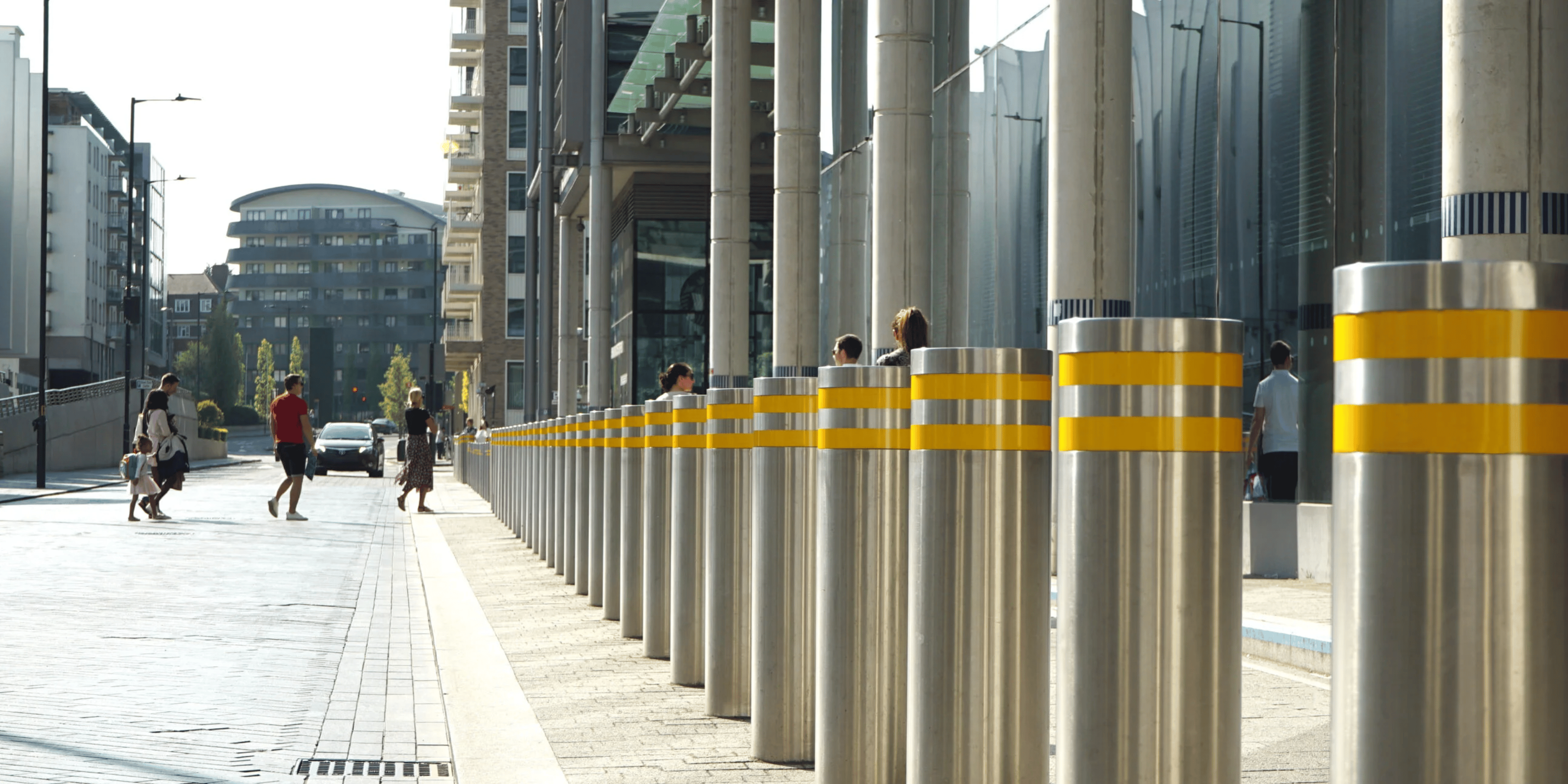
10 Essential Executive Protection Services for Construction Managers
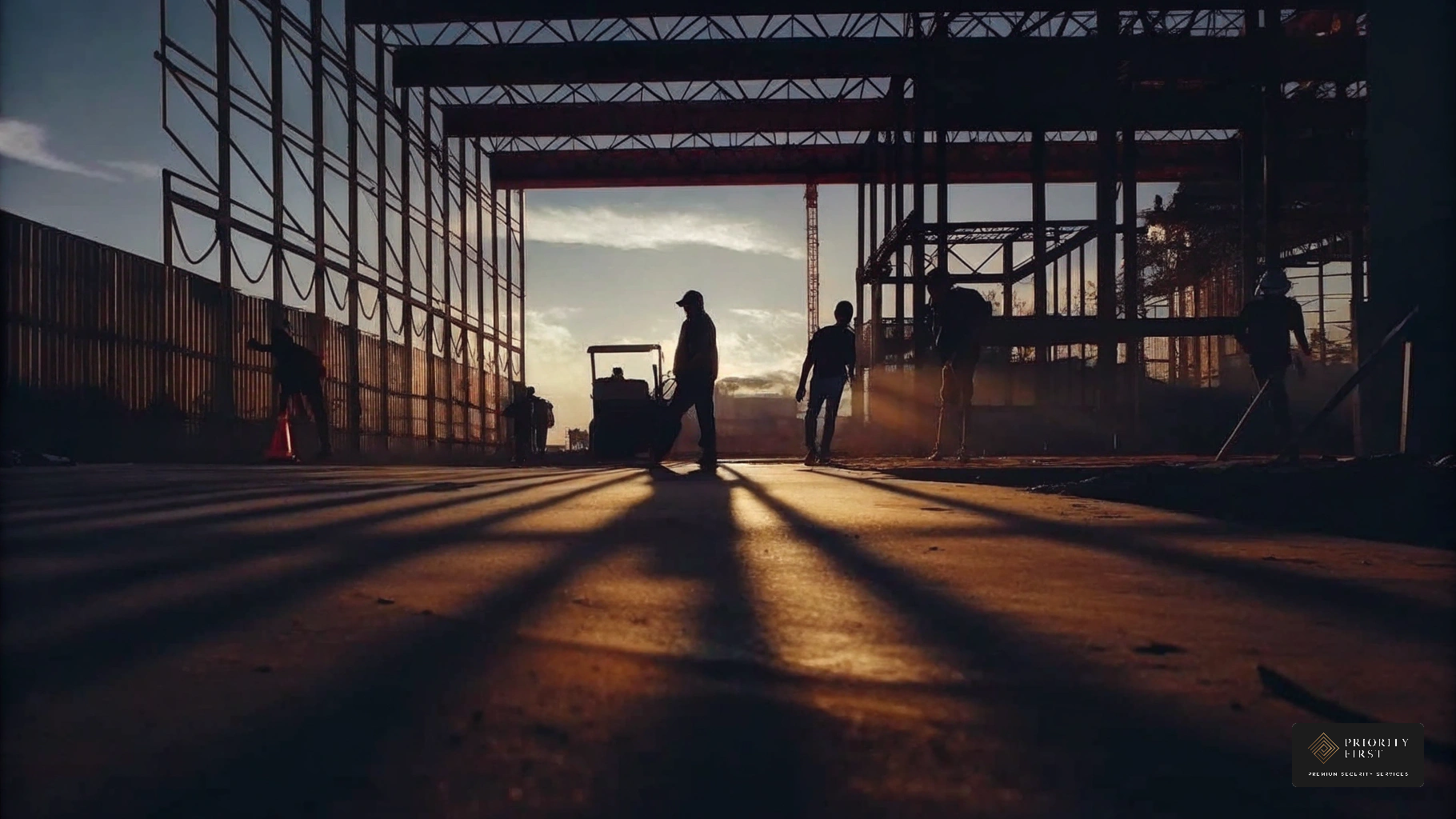
Overview
The article underscores the necessity of executive protection services for construction managers to guarantee safety on building sites. Tailored protection strategies, such as advanced surveillance, risk assessments, and real-time monitoring, are essential for mitigating threats like theft and vandalism. This allows managers to focus on their core responsibilities without safety distractions. The reality is that neglecting these protective measures can lead to significant operational and financial repercussions. By implementing robust security protocols, construction managers can safeguard their projects, ensuring business continuity and resilience in a challenging environment.
Introduction
The construction industry faces significant security challenges, including theft, vandalism, and compliance with strict safety regulations. These issues demand attention, as the risks associated with inadequate security can lead to substantial financial losses, operational disruptions, and reputational damage. Ignoring these risks is not an option; the cost of theft in the UK construction sector exceeds £1 million weekly, underscoring the urgent need for effective security measures.
In this context, tailored executive protection services become essential, safeguarding not only high-profile individuals but also the integrity of sensitive project information. Construction managers must navigate these complexities while focusing on their core responsibilities. Priority First offers a pragmatic solution, providing ten essential executive protection services specifically designed for construction sites.
By implementing proactive strategies, businesses can significantly enhance safety and operational efficiency. Early investment in security measures is crucial; it prevents greater losses down the line and reinforces the resilience of construction operations. This article will explore how these services can be integrated into construction management to create a secure environment conducive to productivity.
Priority First Security Services: Tailored Executive Protection for Construction Sites
Priority First Security Services delivers customised executive protection services specifically tailored for building sites. This approach integrates , AI-driven tools, and a team of seasoned experts to safeguard high-profile individuals and sensitive project information. By addressing unique challenges inherent in building sites—such as theft, vandalism, and compliance with health and safety regulations—Priority First significantly enhances the safety posture of construction projects. This allows construction managers to focus on their core responsibilities without the distraction of safety concerns.
Recent trends indicate a growing emphasis on proactive safety measures, as organisations increasingly recognise the need for comprehensive protection strategies. For example, the rise in executive protection services budgets reflects a transition from reactive to proactive security investments. This shift is critical in construction environments, where operational complexities can escalate rapidly, necessitating robust protective measures.
Effective executive protection services in construction settings include the integration of:
- advanced surveillance systems
- access control protocols
- key holding
- CCTV monitoring
- rapid-response teams
These components collaborate to create a secure environment, ensuring that both personnel and assets are adequately protected. Moreover, with 13% of incidents involving executive personnel incorporating cyber elements, it becomes essential to integrate digital hygiene protocols and psychological support services into executive protection services strategies. As highlighted by industry experts, the safety of leadership teams—particularly in high-stakes settings like construction—has emerged as a paramount concern, underscoring the necessity for executive protection services.
In conclusion, Priority First's commitment to customised executive protection services not only fortifies building projects against potential threats but also enables managers to concentrate on project execution, ultimately enhancing overall operational efficiency.

Understanding Executive Protection Agent Roles and Responsibilities
Executive protection services are essential in safeguarding high-profile individuals, such as site managers and project leaders, from various threats. Their role involves conducting thorough risk evaluations to identify vulnerabilities specific to construction sites, which often face unique challenges like theft, vandalism, and safety compliance issues. A recent survey indicates that project managers are increasingly targeted due to the high value of on-site equipment and materials, with theft incidents rising by 20% over the past year.
The implications of these risks for businesses are significant. Ignoring such vulnerabilities can lead to financial losses, operational disruptions, and reputational damage. To mitigate these threats, executive protection services devise and enforce robust on-site safety measures, including access control and monitoring systems. Their training encompasses advanced defensive techniques, crisis response, and conflict de-escalation, equipping them to manage any potential situation effectively.
Moreover, agents maintain constant situational awareness, allowing them to adapt to changing environments and respond swiftly to emerging threats. This proactive approach enables project managers to concentrate on their core responsibilities, with the assurance that their safety is prioritised. For instance, a recent project in London experienced a notable decrease in security incidents following the implementation of comprehensive executive protection services, which involved regular risk assessments and tailored security protocols.
In conclusion, the expertise of executive protection services not only enhances the safety of project managers but also contributes to the overall success of construction projects by ensuring a secure working environment. Early investment in these protective measures can prevent greater losses in the future.

Pre-Deployment Planning and Intelligence Gathering for Effective Protection
Pre-deployment planning is critical for ensuring security at building locations. It involves gathering essential information about the site, including its layout, access points, and potential vulnerabilities. The reality is that understanding these factors is crucial for associated with construction projects.
Assessing the local environment for specific threats, such as crime rates or political instability, is equally important. Ignoring these risks can lead to significant financial, operational, or reputational consequences for businesses. By conducting thorough reconnaissance and intelligence gathering, executive protection services can develop tailored strategies that address the unique risks linked to each building project.
At Priority First, we integrate our logistics services with executive protection services to enhance operational efficiency while maintaining rigorous security standards. Our extensive building evaluations and risk analyses bolster protective measures, enabling us to pinpoint weaknesses and implement customised solutions that safeguard high-profile individuals.
Our services encompass access control, surveillance, and CCTV monitoring—essential elements for protecting personnel and assets. The lesson is clear: investing in security from the outset not only prevents potential losses but also supports long-term business continuity.
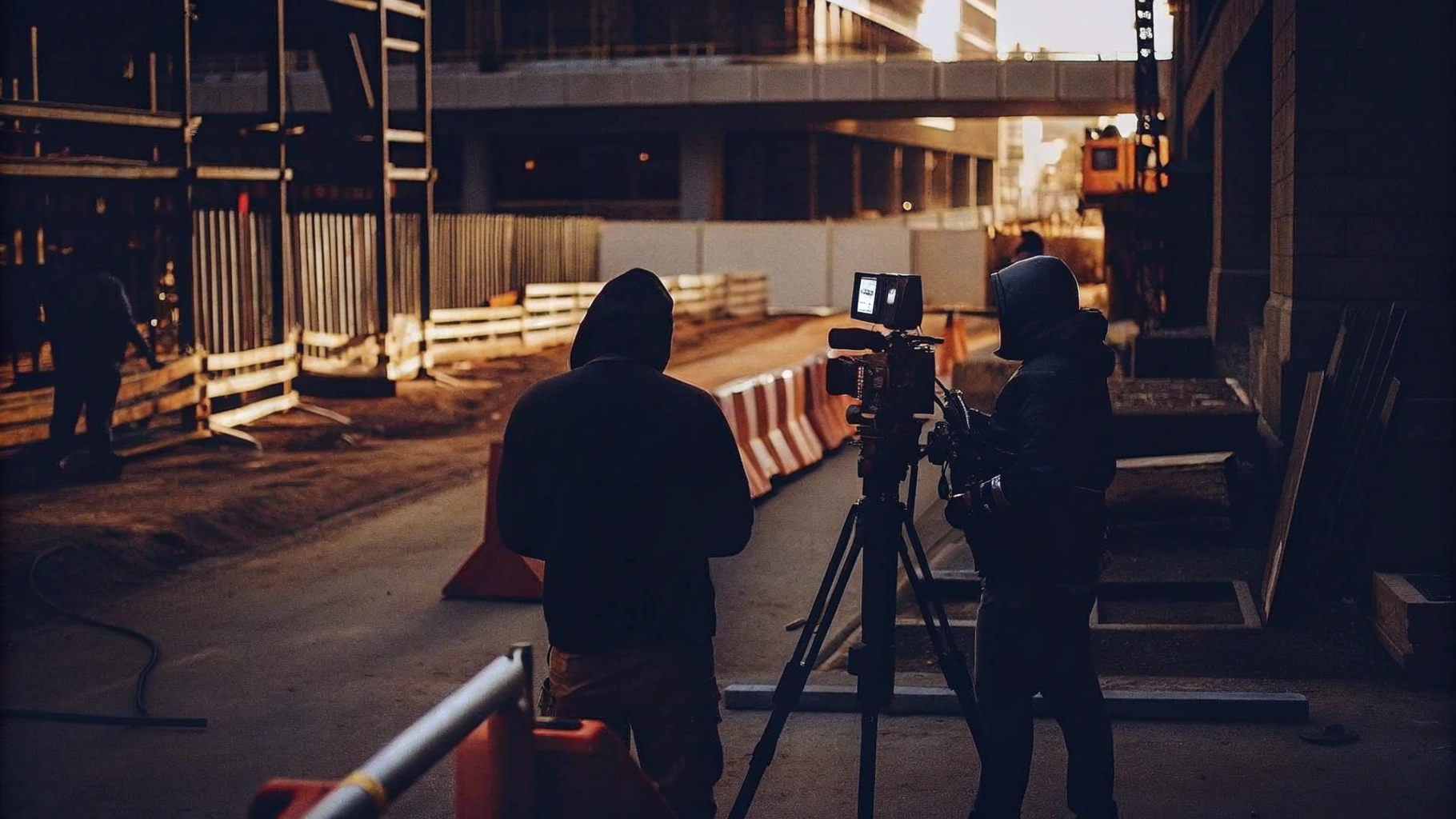
Evaluating Travel and Venue Security for Construction Projects
Assessing travel and venue security is essential for project managers overseeing developments. This process involves a thorough evaluation of transportation methods, accommodations, and meeting venues to ensure the . Key considerations include:
- Route Analysis: Identifying potential hazards along travel routes, such as high-crime areas or construction zones, is vital to mitigate risks during transit.
- Secure Accommodations: It is crucial to confirm that lodging options meet security standards, including secure access and surveillance measures, to protect team members.
- Venue Safety Verification: Evaluating the safety of locations for meetings or events through site-specific safety assessments is necessary. This involves verifying adequate perimeter protection, emergency procedures, and crowd management strategies.
Proactive measures can significantly reduce risks associated with travel, ensuring that teams remain safe while conducting business. Recent trends underline the increasing importance of layered protective measures, particularly in construction settings where vulnerabilities may be exploited. For instance, the adoption of real-time monitoring technologies, including drones and AI analytics, has become standard practise to enhance venue safety.
Expert insights emphasise the necessity of customised risk evaluations, aligning with the proactive protective strategies advocated by industry leaders. By implementing best practises such as securing building access points with layered authentication and integrating high-volume monitoring systems, construction managers can establish secure environments that not only protect their teams but also safeguard project investments. Moreover, understanding hostile vehicle mitigation (HVM) strategies can further enhance protective measures, effectively addressing potential threats. Statistics reveal that approximately 31% of S&P 500 companies currently provide personal protection to senior leadership, highlighting the growing recognition of the need for improved safety in high-risk environments.
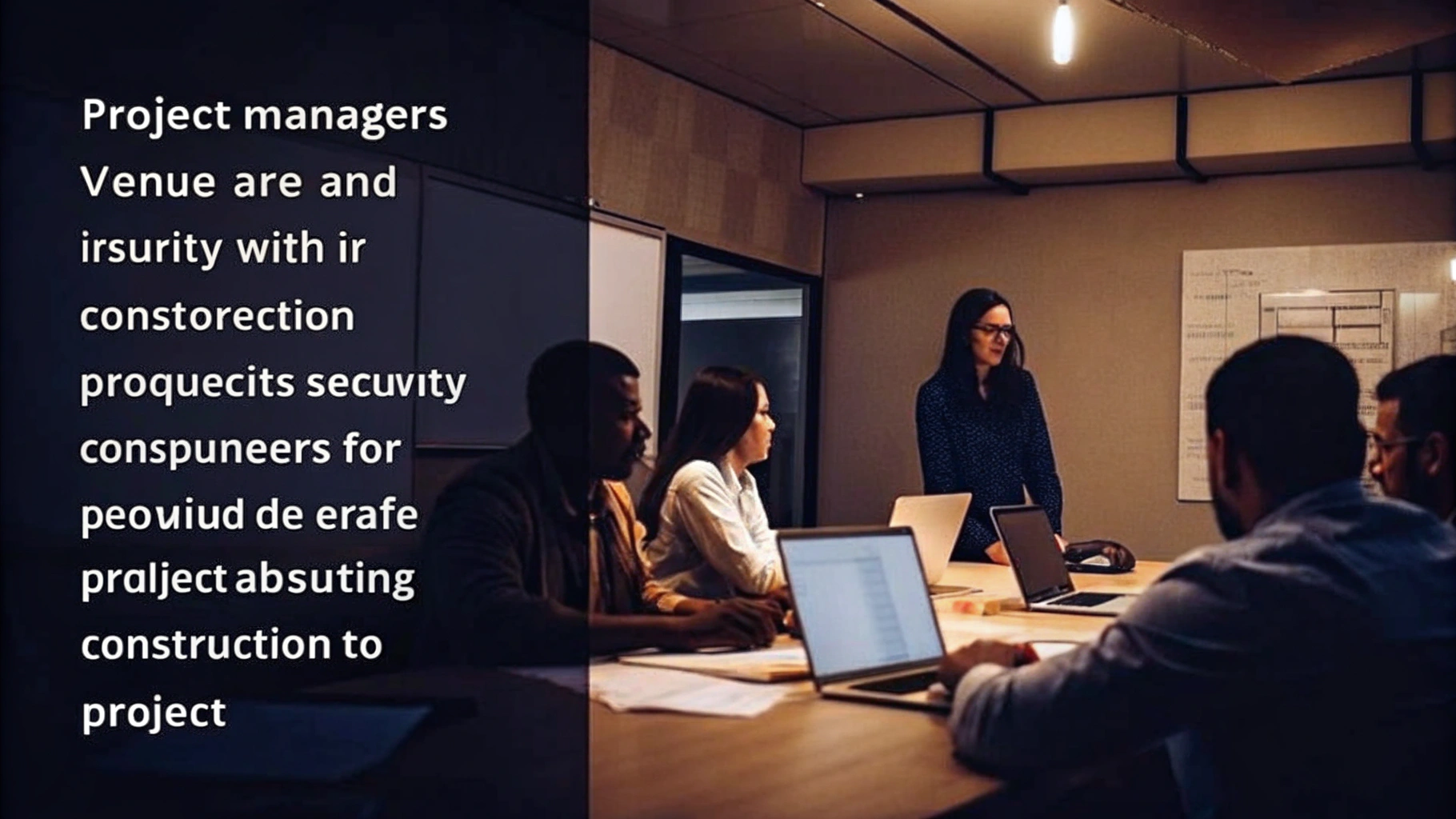
Operational Execution: Real-Time Protection Strategies for Construction Sites
The operational execution of protection strategies on building sites is fundamentally dependent on the strategic deployment of safety personnel, advanced surveillance systems, and robust communication protocols. The reality is that utilising AI-driven surveillance cameras and access control systems allows for the detection of unauthorised access and suspicious activities in real time. This proactive strategy is essential, especially considering that cost the UK building sector over £800 million annually. By maintaining vigilant oversight and implementing swift reaction protocols, project managers can significantly mitigate risks and protect their initiatives against potential threats.
In practise, the incorporation of real-time monitoring not only enhances location security but also boosts overall productivity. A striking statistic illustrates this: there was a 34% reduction in property crime reported in the UK in 2021, attributed to advanced surveillance technologies. Efficient operational implementation of these protective measures ensures that building areas remain secure and compliant with safety regulations, ultimately safeguarding valuable assets and personnel.
The lesson is clear: early investment in security measures is not merely an expense; it is a critical component of business continuity. By prioritising security, companies can prevent far greater losses down the line, reinforcing the importance of a proactive approach to site protection.
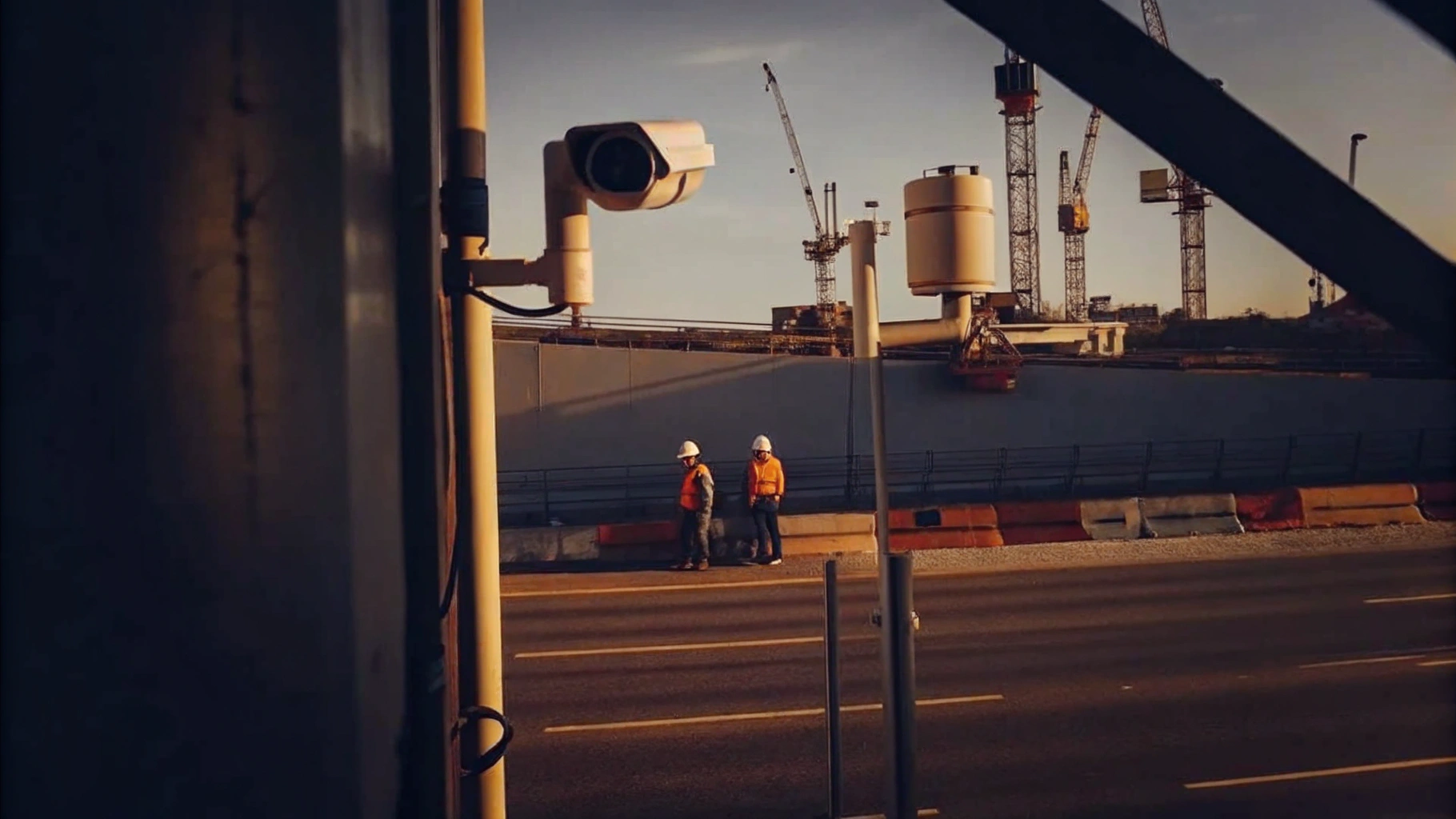
Maintaining Situational Awareness and Adaptability in Construction Security
Sustaining situational awareness is essential for enhancing safety on construction sites. This involves consistently monitoring the location and its surroundings for potential threats, including personnel movements, equipment usage, and any unusual activities. Security personnel must be trained to identify signs of potential risks and adapt their strategies accordingly. Research indicates that construction sites experience elevated rates of job-related injuries and fatalities, often linked to lapses in situational awareness. For instance, workers with low awareness levels demonstrate significantly less attentiveness to hazards compared to their more vigilant counterparts.
To cultivate a culture of situational awareness, construction managers should implement that underscore the importance of vigilance and proactive threat recognition. Techniques such as the 20-20-20 rule—where employees take breaks every 20 minutes to assess their environment—can significantly enhance focus and hazard recognition, ultimately reducing the likelihood of incidents. Furthermore, regular emergency drills and scenario-based training can simulate high-risk situations, improving workers' ability to respond effectively to emerging threats.
Priority First offers tailored safety management and consulting services that can further bolster executive protection services on construction sites. Our services include:
- Threat evaluations
- Policy development
- Risk management planning
These services help identify vulnerabilities and propose integrated protection solutions that align with your operational needs. Effective adaptability tactics in site protection also encompass fostering open communication among team members. This facilitates timely reporting of unsafe conditions and sharing of updates on potential risks. By incorporating these strategies, including the use of Job Hazard Analysis (JHA) to identify potential risks, project supervisors can create a safer work environment, ensuring that all personnel are prepared to respond to hazards and maintain safety effectively.

Recognizing Real-Time Threat Indicators on Construction Sites
Training personnel to recognise is crucial for ensuring safety on construction sites. This training emphasises the identification of behaviours or situations that may indicate potential risks, such as:
- Unauthorised access
- Unusual gatherings
- Suspicious activities
Effective training programmes incorporate practical scenarios and simulations, enabling teams to develop the skills necessary for prompt and decisive action.
Current training methods include workshops that stress situational awareness and the integration of technology, including AI-driven surveillance systems, to bolster threat detection capabilities. These effective programmes often feature practical exercises where personnel rehearse responses to various threat scenarios, enhancing their ability to react swiftly and efficiently.
By implementing a robust reporting system for these indicators, project managers can ensure that security personnel remain vigilant and are empowered to address potential threats. This proactive approach not only mitigates risks but also enhances overall site security, fostering a safe environment for all workers and stakeholders involved in the project.
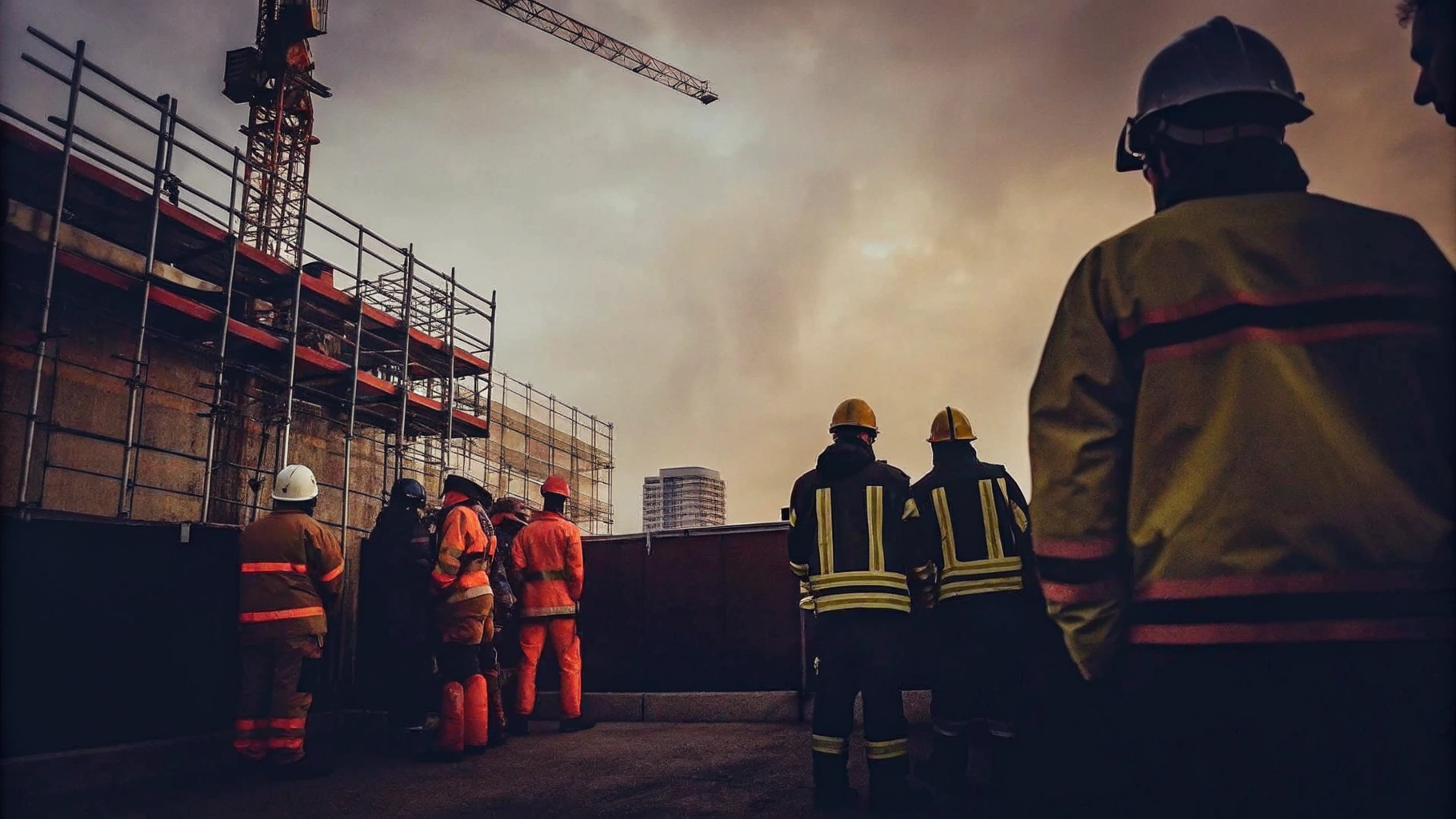
Proactive Risk Mitigation and Emergency Response Tactics for Construction
Proactive risk mitigation is crucial in construction, emphasising the identification of potential hazards and the implementation of preventive measures before incidents arise. Regular inspections play a vital role in uncovering vulnerabilities, while educating staff on emergency procedures ensures readiness for unforeseen circumstances. Establishing transparent communication pathways for reporting incidents fosters a [culture of security and accountability](http://priorityfirst.co.uk/insights/10-key-aspects-of-security-close-protection-for-construction-sites) among team members.
In emergencies, a well-defined response plan is indispensable. Such a plan outlines the roles and responsibilities of each team member, enabling a swift and coordinated response to any situation that may arise on the construction site. This organised approach minimises confusion during crises and , ensuring that all personnel are equipped to manage emergencies effectively. By prioritising these strategies, project managers can significantly mitigate risks and bolster the safety and efficiency of their projects.
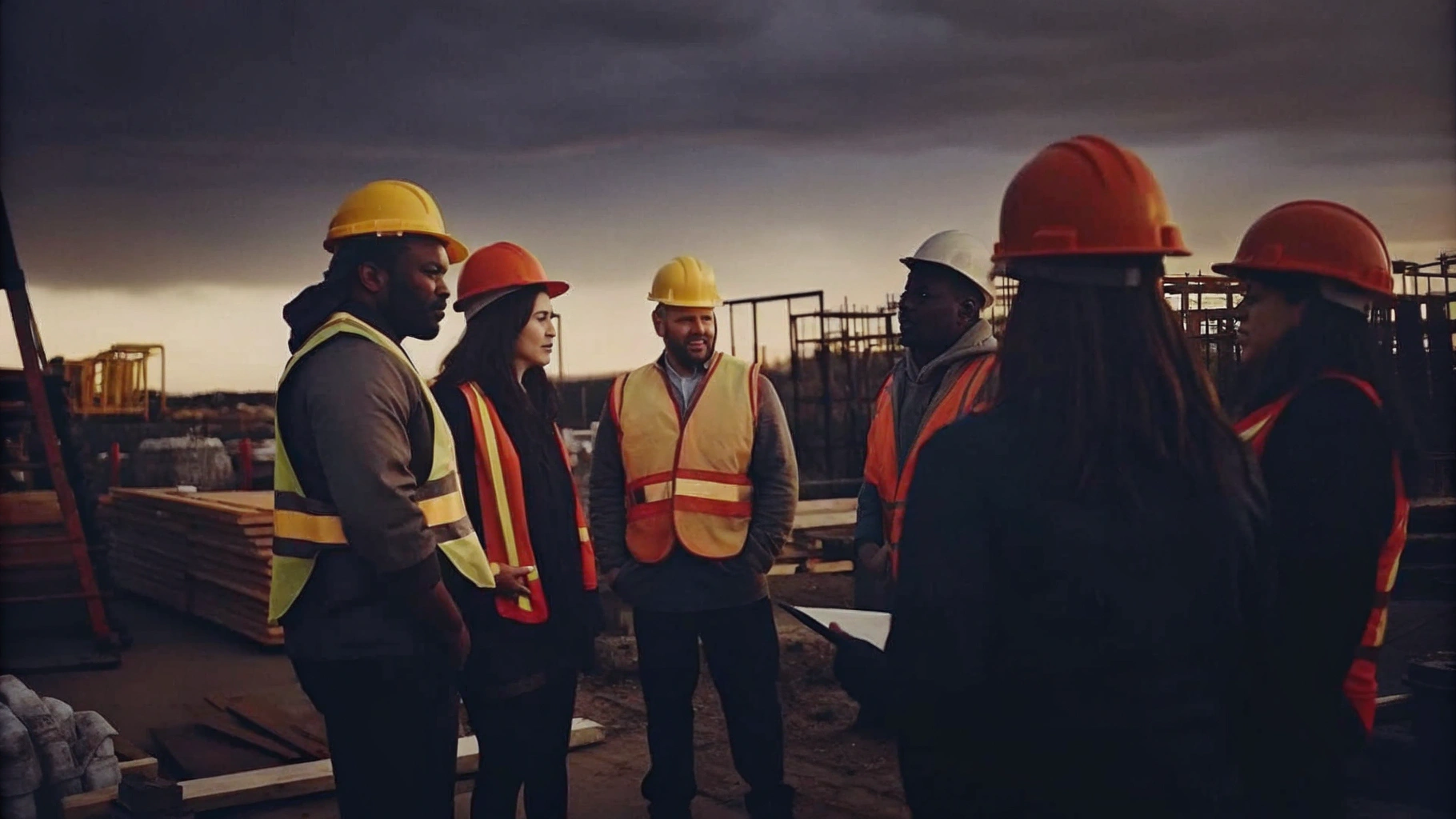
Continuous Improvement: Post-Operation Analysis for Enhanced Security
Post-operation analysis is essential for evaluating the effectiveness of protective measures implemented during construction projects. This process involves:
- A thorough examination of incident responses
- Identification of vulnerabilities
- The collection of feedback from personnel involved
Statistics indicate that projects incorporating comprehensive post-operation evaluations see a significant reduction in breaches, alongside improvements in response times and overall site safety. By scrutinising previous operations, project managers can refine their protection strategies, ensuring that future projects benefit from lessons learned and enhanced protocols. This continuous improvement process not only bolsters safety but also fosters a culture of accountability and on-site.
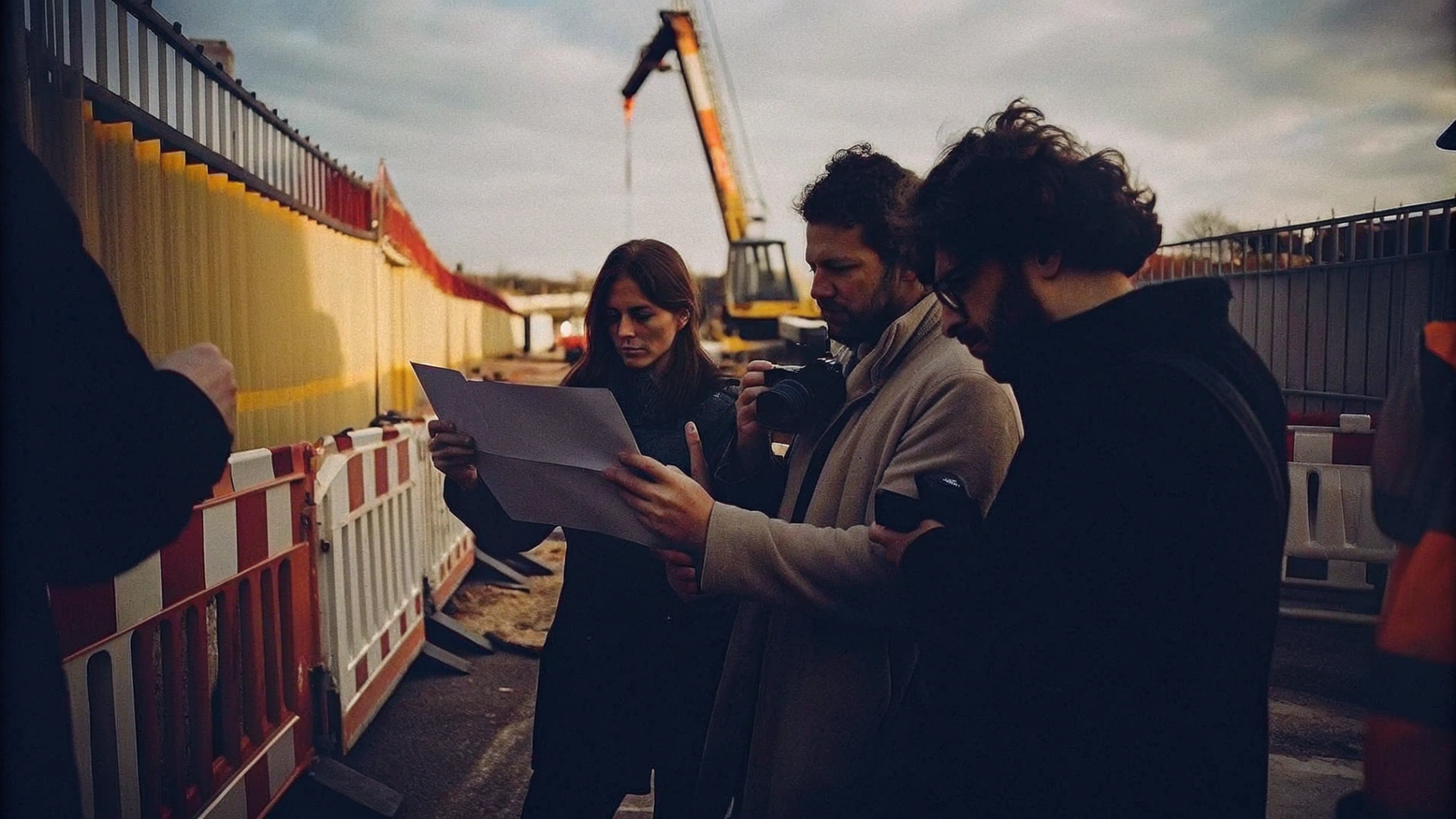
Updating Threat Profiles for Long-Term Safety in Construction Environments
Consistently refreshing threat profiles is essential for managers aiming to effectively protect their locations. A reported 67% rise in building-related crime underscores the importance of this practice. This reality necessitates a thorough evaluation of the safety environment, which includes:
- Tracking local crime statistics
- Monitoring political conditions
- Assessing industry developments that could introduce new risks
Understanding these dynamics is crucial for . By staying informed about the latest developments, construction managers can proactively address vulnerabilities, ensuring the long-term safety of their projects and personnel. Moreover, integrating advanced technologies, such as AI-driven monitoring systems, enhances threat detection and response capabilities, further fortifying site security against emerging challenges. The lesson is clear: early investment in security measures prevents greater losses later.
Conclusion
Priority First Security Services underscores the essential role of tailored executive protection in enhancing safety and operational efficiency on construction sites. By integrating advanced technologies and expert personnel, these services effectively address the unique challenges present in construction environments. This allows managers to concentrate on their core responsibilities without the added burden of safety concerns.
The article identifies several key components of effective executive protection, including:
- Pre-deployment planning
- Real-time monitoring
- Continuous improvement strategies
Conducting thorough risk assessments and implementing robust emergency response plans are measures that collectively contribute to a secure working environment. Furthermore, this proactive approach to security not only mitigates risks but also nurtures a culture of safety, which is vital for successful project execution.
Ultimately, investing in specialised executive protection services is not merely a precaution; it is a strategic necessity for construction managers. As the construction landscape continues to evolve, maintaining updated threat profiles and adapting security measures will be crucial in safeguarding personnel and assets. By prioritising these protective strategies, construction professionals can ensure long-term safety and operational success in their projects.
Frequently Asked Questions
What services does Priority First Security Services provide for construction sites?
Priority First Security Services offers customised executive protection services specifically tailored for building sites, integrating advanced protective technology, AI-driven tools, and a team of seasoned experts to safeguard high-profile individuals and sensitive project information.
What challenges do construction sites face that make executive protection necessary?
Construction sites often face unique challenges such as theft, vandalism, and compliance with health and safety regulations, which necessitate robust executive protection measures.
How has the focus on safety measures changed in recent years?
There has been a growing emphasis on proactive safety measures, with organisations increasingly recognising the need for comprehensive protection strategies, reflected in the rise of executive protection services budgets.
What are some key components of effective executive protection services in construction settings?
Key components include advanced surveillance systems, access control protocols, key holding, CCTV monitoring, and rapid-response teams, all collaborating to create a secure environment.
Why is digital hygiene important in executive protection services?
With 13% of incidents involving executive personnel incorporating cyber elements, integrating digital hygiene protocols is essential to protect against cyber threats.
What roles do executive protection agents play in construction sites?
Executive protection agents conduct thorough risk evaluations to identify vulnerabilities, devise safe travel routes, enforce safety measures, and maintain constant situational awareness to manage potential threats effectively.
What training do executive protection agents receive?
Agents are trained in advanced defensive techniques, crisis response, and conflict de-escalation, equipping them to handle various situations that may arise on construction sites.
How does pre-deployment planning contribute to effective protection?
Pre-deployment planning involves gathering information about the site layout, access points, and potential vulnerabilities, which is crucial for mitigating risks associated with construction projects.
What are the consequences of ignoring security vulnerabilities on construction sites?
Ignoring such vulnerabilities can lead to financial losses, operational disruptions, and reputational damage for businesses.
How can investing in executive protection services benefit construction projects?
Early investment in executive protection services can prevent greater losses in the future and contribute to the overall success of construction projects by ensuring a secure working environment.



